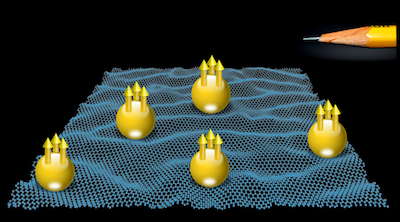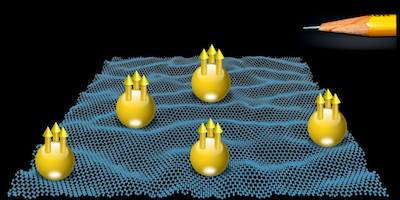
If two layers of graphene – a single-atom-thick layer of carbon atoms similar to the graphite found in pencils – are sandwiched together and subjected to a magnetic field, they host strange quasiparticles called anyons that could be used to build qubits, the bits of information processed by quantum computers. (Image credit: Zlatko Papić)
Researchers have found experimental evidence of strange quasiparticles in graphene that could be used as qubits, the bits of information processed by quantum computers.
Graphene is a single-atom-thick lattice of carbon, but when two layers are sandwiched together and subjected to a magnetic field, strange entities can exist at the interface. Unlike the 3D world in which fundamental particles – fermions and bosons – have strictly defined properties, in the 2D universe of graphene they can meet halfway, becoming anyons.
If the newly-detected quasiparticles turn out to be of a certain type known as “non-Abelian anyons” they can be used to make qubits.
Original research paper published in the journal Science on July 4, 2014.
Names and affiliations of selected authors


